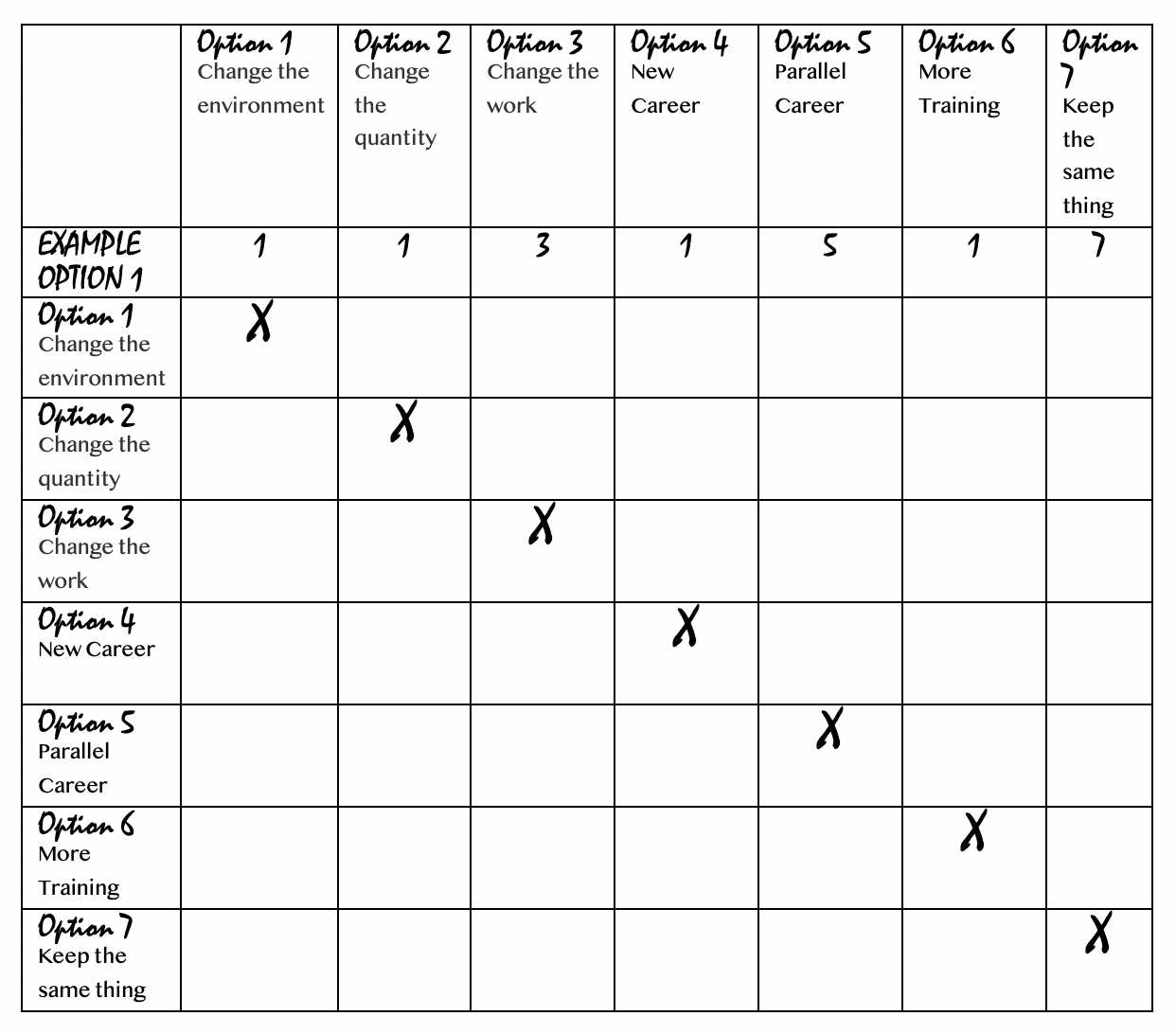The Joy and Dread of Moving To and From a Foreign Country: Keep, Give, Recycle
/The joy and dread of moving to and from a foreign country.
Moving has always included a certain element of dread. From a young age, I was told, you’ll make friends around the world, and see things others won’t. And while I knew and experienced the reality of that truth, the lack of one home caused deep confusion in my place of belonging and of my belongings.
For many who have lived a lifetime of moving, the stuff becomes reflective - either getting stuck in a period of time surrounding oneself with all the things, or completely releasing all things and living a rigidly simplistic lifestyle.
My journey has included both of which I hope in my 5th decade to now come closer to a balanced view and ability to embrace things and simultaneoulsy release them at any given moment. I want to live my life free from the attachment to things, and from a place of generosity!
This post was inspired from a previous blog when “how to get rid of your stuff?”, got a little lengthy. Below I offer what we did when we moved from Spain during the Covid pandemic and how we sold 3/4 of our belongings. This is a practical and subjective article. To understand the context, read: Attachment to Things: Your Story of Stuff and the Subtle (and not so subtle) Impact on Moving to gather a fuller picture.
Bottom line: Approach a move in stages.
It was early in the pandemic when no one was buying or selling from strangers. We were living in Spain on strict lockdown. Remember when we were unable to go to one another’s home and we sanitized anything new that entered our homes? Well, we were amongst the crazy ones who were already in motion to move in the summer of 2020. We had lived in Spain for 8 years as a family of four and despite loving our life abroad, the time was now for many reasons. We had discerned and clarified and were convinced that repatriating would be a part of our story.
To sell things, we began by sorting into three piles: Yes, No, & Maybe. We had clear “yes” piles for each person and set those aside for the very small shipping container we planned to use.
From the no and maybe piles were slightly more problematic so we began to gather these and work at making small daily decisions with as limited touchpoint with each object as possible (limiting decision-making). We were still months away from our launch date, but the sorting was in full swing. I knew I wanted to save my best energy for the end to be with people whole-heartedly. We set our move out date a month earlier than our flight, organized a place to stay at our friend’s and began the tedious task of determining meaning from our belongings.
This was an ongoing process, but we knew big things and certain electrical appliances (and toilet paper roll projects) wouldn’t make the cut of expensive shipping.
We then began taking pictures of items with as much detail as possible to sell.
Next, using these pictures, we created a google doc and made a simple grid, listing every item, with a number, a name and a picture. We included a description with as much and as HONEST of information as we would want if you were buying the items. The desire was to predict questions and answer them in advance to minimize unnecessary questions and back-and-forth communication. (i.e. Is it new or used, how big is it, how old is it?)
The reason for using the google platform was that it updated in real time, was easy to navigate, and didn’t cost money. Most people had access and familiarity, and a simple link could be shared on a WhatsApp group or email.
With a little over a month out from our move out date, we sent out the link to targeted people we knew were moving and asked them to reply back on what they wanted. Next we hit up our local community (people felt surprisingly sentimental to our stuff!), After a few intentional group roll-outs, and an added sense of urgency that we were going to allow for a larger audience to look at things, we told people to send it out generously.
And then we quickly began to hear back.
One thing that felt unique this time, is that we didn’t hold anything without payment. We asked for a Venmo or PayPal payment to ensure these items were spoken for. And because most of the transactions took place digitally we asked if possible for the currency of the country we were moving to (not living in). We needed the money for where we were headed not where we were. While this sounds a bit rigid, it was an incredible time saver for us as sellers and helped clarify expectations for the buyers.
We made another document (on the notes app) listing the number and name that went with what person. Many bought several things so this helped us stay organized.
We then asked people to come to us and come within OUR availability. As selfish as that sounded it was a lifesaver. We wrote a general email and WhatsApp message and sent it out to the masses including these open periods of time. Because most people were in our network they were supportive and respectful of this request.
Probably the most beneficial thing we did this move, was in setting up LIMITED pickup times. When I say limited, I mean limited! We offered two windows of time for buyers to come or send someone on their behalf. (Example: Tuesday 12-3 and Thursday 3-6). Of course if we had someone who bought a lot, or had a good reason, we made exceptions.
I can’t say it enough…Scheduling blocks of limited time for pickup made all the difference! When you’re talking about communicating with 30+ people this will limit the communication to serve you well - especially in relational-centered cultures! (Whatever permission you need to do this, please find it!)
There are so many things to do in the final countdown before moving and while many do understand this limitation, there seem to be an equal number who don’t. Don’t be flexible on this. You are leaving your whole life which always includes a vast array of emotions, not to mention is stressful and time-consuming, and A LOT of work.
Included in those windows of time, we added a garage/yard sale & “free” sale at the very end. While people were picking up the bigger items, we were setting up the little items that we didn’t take pictures of for a sale at the end of the week. Now, let me just add that garage sales can be a pain. Prices are low, you sit there for hours, and well, you get it. But the good thing was that when people came to get their bigger items, nearly everyone bought something off of that garage sale (not yet organized) pile, as well. The actual sale date was two days out but people got to shop early for buying our bigger items. Our prices were just above the we’ll-pay-you rate.
This time around, despite covid and the incredible stressors involved in not knowing how moving would look, we felt incredibly seen in this process. People understood, were eager to shop, took a lot and many came back for more. We didn’t pressure ourselves to hold onto unnecessary items as we were thrilled that others could use them. As well, we didn’t mark or have all the for-sale items ready or priced at once. We allowed ourselves so much grace to start sorting early and ongoing when we had energy. When the week came we would keep adding to the piles and used the pick up times as helpful external motivation.
We also had a “please repurpose” section which was basically our free pile of half-used up boxes of toilet paper (a hot commodity then), non-expired food, and other small not-worth-it-to-ship-or-sell-treasures!
To note: This particular move, I didn’t waste my time with the wider socials. I was living in a foreign country and didn’t want the hassle of back-and-forth communication. (It was also during covid and unlikely a stranger would come over, anyways. If I were doing this again in non-covid times and in the US, I would use a buy nothing group (see Facebook in your area) and Facebook marketplace or nextdoor.
I've moved a lot and done this a lot...those are my few top pointers: Specific up-to-date descriptions on a document like googledoc, utilizing a wide network, limited pick-up times, and a general sale with as much help as you are able to pay for with those used items!
Moving is a ton of work. Give yourself a well-deserved reward of moving out with AT LEAST one week margin before getting on a plane open. Moving away from the stress of decision-making around belongings allows you the gift to enjoy the most valuable part of your expatriate life, the love of the people.
For deeper reflection: Where do you find yourself stuck? What do you notice comes up for you when you begin to think about moving?








































